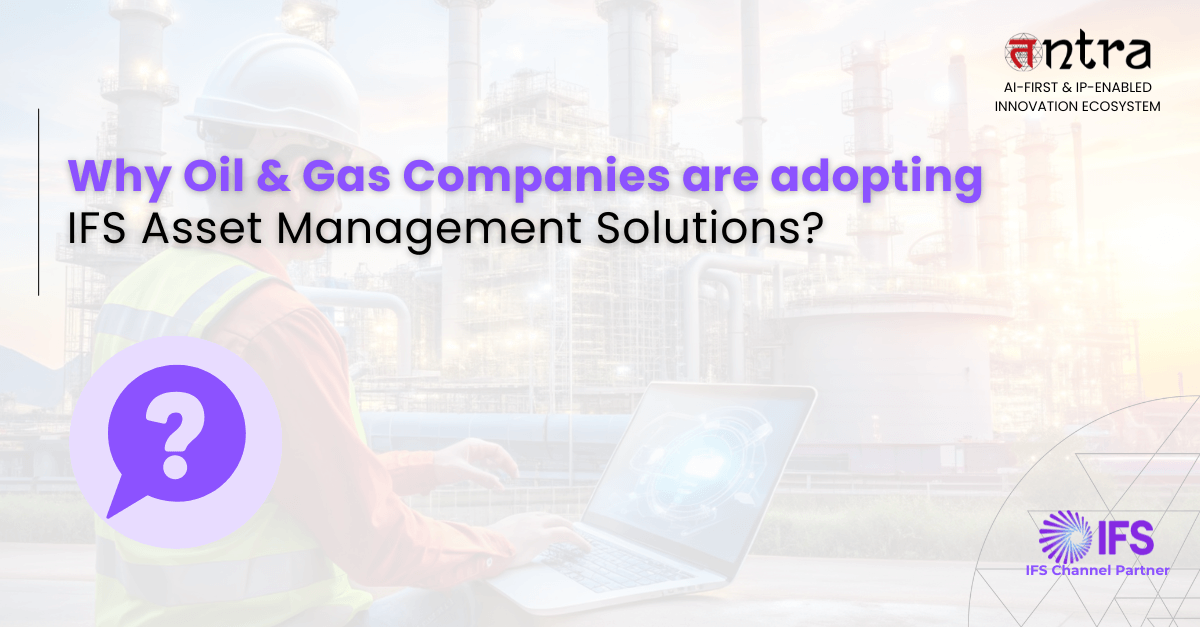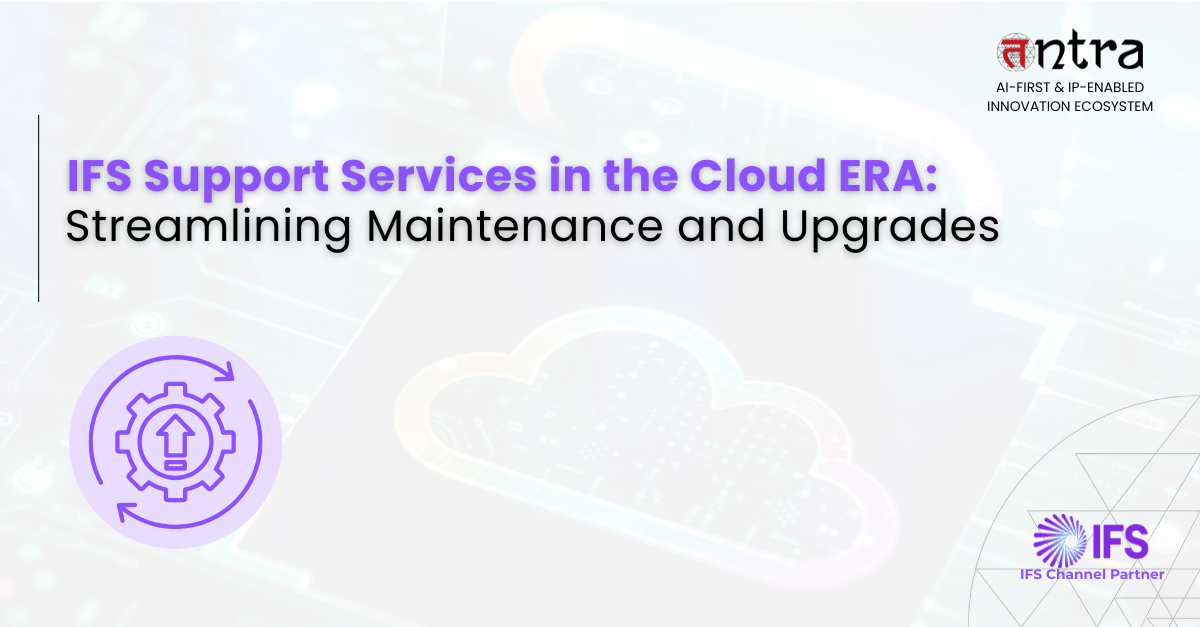
Why Oil & Gas Companies are adopting IFS Asset Management Solutions
Table of Contents
ToggleThe article explores how IFS Asset Management Solutions empower oil and gas companies to achieve peak operational efficiency. It details how IFS EAM for Oil and Gas integrates asset lifecycle management, predictive maintenance, and equipment reliability management to minimise downtime and maximise ROI.
By combining asset intelligence, ERP integration, and cloud capabilities, IFS for Oil and Gas delivers complete visibility and control over complex operations, driving digital transformation, sustainability, and smarter decision-making across the entire asset ecosystem. Continue reading to learn more.
In the highly asset-intensive world of oil and gas, operational efficiency is no longer a nice-to-have, it’s a strategic imperative. Organisations are under constant pressure to reduce unplanned downtime, extend equipment life, comply with stringent safety and environmental regulations, and optimise capital investment. This is where the right solution for IFS EAM and related tools comes into play.
In this article, we will explore how IFS Asset Management (and its broader suite) supports Asset Management in the Oil and Gas Industry, enabling Oil and Gas Operations Optimisation, deeper Asset Intelligence, and true Asset Lifecycle Management through an integrated platform approach.
Why the Oil & Gas Industry Needs Advanced Asset Management
Oil and gas companies manage a diverse mix of fixed and mobile assets—offshore rigs, pipelines, compressors, wellheads, processing units, and more. These high-value assets:
- Impact operational performance
- Influence regulatory compliance
- Affect safety and environmental outcomes
- Drive long-term capital investment decisions
Yet many operators still rely on reactive maintenance, siloed systems, manual work orders, and fragmented visibility into asset health.
By adopting modern Oil and Gas Asset Management practices, companies can shift from reactive to proactive operations, reduce downtime, extend equipment life, and enable data-driven capital expenditure planning.
Introducing IFS Asset Management Solutions for the Energy Sector
IFS Asset Management Solutions form a comprehensive ecosystem for managing the entire asset lifecycle—from acquisition and commissioning to operations, maintenance, and decommissioning.
The platform includes:
- IFS Cloud EAM
- IFS enterprise asset management features
- IFS ERP for Oil and Gas
- Mobile workforce management
- Predictive analytics
- IoT-enabled asset intelligence
- Industry-specific configurations for upstream, midstream, and downstream
This unified approach empowers operators with real-time visibility, smarter planning, and seamless collaboration across engineering, finance, procurement, maintenance, and field operations.
Core Capabilities That Transform Oil & Gas Operations
1. Comprehensive Asset Lifecycle Management (ALM)
IFS positions Asset Lifecycle Management as a key component of its EAM offering.
For oil and gas companies, this means maintaining a single source of truth for all critical assets, including:
- Drilling rigs
- Pipelines and flowlines
- Offshore platforms
- Refinery assets
- Transportation fleets
IFS ALM tracks everything from work orders and inspections to compliance records and maintenance history. This level of visibility is essential for long-term Oil and Gas Operations Optimization.
2. Asset Intelligence & Asset Performance Management
IFS offers strong asset performance management capabilities that deliver actionable asset intelligence.
Operators gain insights into:
- Asset health and condition
- Remaining useful life
- Reliability patterns
- Real-time performance metrics
By leveraging asset intelligence, companies can optimize maintenance schedules, reduce unexpected failures, and maximize asset longevity—crucial for high-value assets in harsh environments.
3. Predictive Maintenance & Equipment Reliability Management
IFS EAM enables predictive maintenance in oil and gas, combining IoT sensors, analytics, and machine learning to detect early failure indicators.
Benefits include:
- Reduced unplanned shutdowns
- Increased equipment uptime
- Better reliability across rotating and static assets
- Condition-based maintenance scheduling
- Lower maintenance costs
For asset-intensive operations, predictive maintenance is one of the fastest ways to reduce downtime and improve operational readiness.
4. Oilfield Asset Tracking & Linear Asset Management
Oilfield operations often include mobile, remote, and linear assets (pipelines, wells, subsea infrastructure). IFS Cloud Asset Management supports:
- GPS/telemetry-based tracking
- Maintenance triggers based on usage
- Monitoring across large geographic areas
- Integration with field service mobility
This ensures complete oversight of distributed assets, reducing risk and improving compliance.
5. Seamless Integration with IFS ERP for Oil and Gas
IFS delivers unified operations through tight integration between IFS EAM and IFS ERP.
This allows operators to align:
- Asset investments with financial outcomes
- Maintenance activities with procurement
- Project costs with operational performance
- Compliance requirements with reporting workflows
The result is a centralized operational model that connects people, assets, and processes.
How IFS for Oil and Gas Enables Real Operational Optimization
Standardized Workflows & Better Data Quality
With IFS Asset Management, companies can standardize maintenance and inspection procedures across all sites, eliminating duplication, improving data accuracy, and establishing predictable maintenance cycles.
Smarter Capital and Maintenance Planning
By combining asset lifecycle management and asset intelligence, operators can:
- Better manage repair-vs-replace decisions
- Optimize spare-parts inventory
- Improve shutdown/turnaround planning
- Allocate resources efficiently
Improved Uptime & Reliability
With predictive maintenance and reliability analytics, IFS helps minimize disruptions and increase uptime—key for multi-site oil & gas operations.
Enhanced Remote Operations
IFS supports remote onshore/offshore operations where connectivity is limited.
This capability is especially useful for:
- Offshore rigs
- Remote pumping stations
- Long-distance pipelines
Driving Digital Transformation in Oil & Gas
Adopting IFS Cloud Asset Management is a foundational step toward digital transformation in oil and gas, enabling:
- IoT-driven insights
- Smart maintenance automation
- Mobile-enabled field technicians
- Cloud scalability and security
- Sustainability tracking
Best Practices for Implementing IFS Asset Management Solutions
When rolling out IFS Asset Management for Oil and Gas, the following best practices help maximise value:
- Begin with high-value assets: Identify the most critical assets (those whose downtime would cost the most) and pilot the asset-lifecycle management and predictive-maintenance capabilities there.
- Cleanse your asset data: Successful asset intelligence depends on accurate asset registers, maintenance history, asset relationships and condition data.
- Integrate with field service and mobile work-force: Ensure that field technicians have mobile access to asset data, work-orders, inspection check-lists and can update status in real time.
- Leverage IoT and sensor data: Connect asset sensors, vibration monitors, temperature/pressure data into the EAM platform to feed predictive-maintenance and condition-monitoring analytics.
- Align with projects and ERP: Because oil & gas operations involve massive capital projects, ensure the EAM/ERP integration supports project costing, procurement, regulatory tracking and financial workflows.
- Focus on change management: Rolling out new systems and processes requires training, process redesign and stakeholder buy-in (operations, maintenance, IT, finance).
- Measure outcomes: Track metrics such as asset availability, mean-time-to-repair, maintenance cost per unit, unplanned downtime, and return on asset investment. Link these back to business objectives.
- Scale gradually: Start on-premise or cloud? IFS supports cloud (IFS Cloud EAM) but may also integrate with on-premise legacy environments. Choose the deployment strategy that aligns with your organisation’s maturity and risk appetite.
Industry Outcomes & Recognition
Oil and gas companies using IFS Applications for Oil and Gas report improvements in:
- Cost control
- Maintenance uptime
- Global site visibility
- Operational efficiency
IFS is also recognized as a Customers’ Choice in Gartner® Peer Insights™ for Enterprise Asset Management and is stated as a top provider in market share rankings.
Conclusion: The Future of Oil & Gas Operations Starts with Intelligent Asset Management
In an increasingly competitive and regulated environment, modernizing asset management is no longer optional—it’s a strategic requirement.
IFS EAM solutions for Oil and Gas empowers organizations with advanced asset lifecycle management, predictive maintenance, asset intelligence, and fully integrated ERP workflows.
With IFS Asset Management Solutions, operators can achieve:
- Higher uptime
- Improved safety
- Optimized maintenance costs
- Greater reliability
- Data-driven decisions
- Accelerated digital transformation
The companies that embrace intelligent, cloud-driven asset management will be better positioned to navigate the future of energy.
Ready to Transform your Oil & Gas Operations with IFS EAM?
Get expert guidance on IFS EAM implementation, customization, or optimization.
Contact our IFS specialists today to get started.
FAQs
What is IFS Asset Management and how does it help oil and gas companies?
IFS Asset Management provides a unified platform to manage the full asset lifecycle. It improves visibility, reduces downtime, and enhances maintenance efficiency across critical oil and gas assets.
How does IFS EAM reduce downtime in oil and gas operations?
IFS EAM uses predictive maintenance, real-time monitoring, and asset intelligence to detect issues early, helping operators prevent failures and keep assets running reliably.
Why is predictive maintenance important in IFS Cloud for oil and gas?
Predictive maintenance in IFS Cloud helps forecast equipment issues using IoT and analytics, enabling proactive repairs, lower maintenance costs, and safer operations.
How does IFS support remote and linear oilfield asset management?
IFS offers real-time tracking, mobile access, and lifecycle visibility for pipelines, rigs, and remote assets—enabling better control, reduced risk, and lower OPEX.
Why is IFS considered a leading EAM solution for oil and gas?
IFS combines EAM, ERP, mobility, and predictive analytics in one system, making it ideal for managing complex, high-value oil and gas operations with greater reliability and efficiency.





